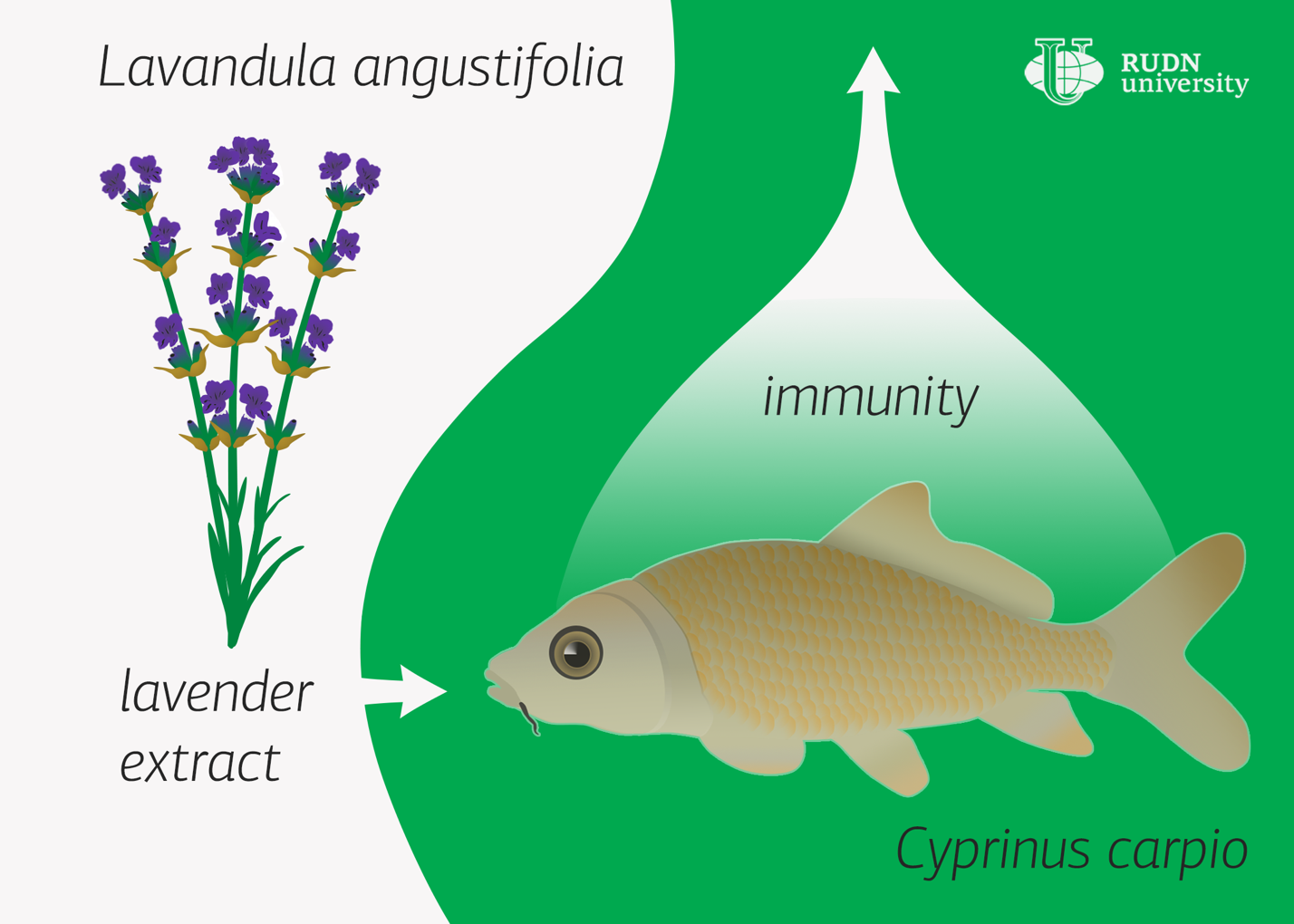RUDN University biologist discovered that lavender enhances the immunity of carp

A significant part of fish in fish farms dies due to illnesses provoked by stress during transportation, sorting, and other operations. The use of antibiotics for the treatment and prevention of infections in fish is not only costly, but also leads to bacterial strains resistant to antibiotics to develop. Therefore, the use of herbal preparations is of particular value as a means of maintaining the health of fish.
Professor Yousefi of RUDN University and his colleagues decided to check whether inclusion of narrow-leaved lavender extract (Lavandula angustifolia) to the feed of common carp (Cyprinus carpio) can enhance the immunity of the fish.
It had already been known that the components of narrow-leaved lavender extract, cineole and linalool, have anti-inflammatory, antioxidant, and anti-stress effects. The biologists assumed that these substances can help fish cope with the negative effects of the stress hormone cortisol.
Yousefi and his colleagues divided the fish into four groups. For 70 days, the fish in the first group received a diet which contained 0.5% of lavender extract, 1% in the second group, and 1.5% in the third one. The fourth group was the control, in which the carps did not receive lavender extract at all. After that, veterinarians subjected the fish to three hours of stress: the water level in the aquarium was reduced by 90%. Before and after the stress test, the authors studied a number of indicators that directly or indirectly reflect the effects of stress in fish.
After 70 days, the fish that received 1% and 1.5% lavender extract additives demonstrated positive changes such as a significant increase in the concentration of soluble and cell-mediated factors of innate immunity, i.e. plasma globulins, immunoglobulins, white blood cells, as well as increased activity of plasma lysozyme and the alternative pathway complement. In the same two experimental groups, gene expression of a number of pro-inflammatory proteins was lower than that in the control group. Lavender did not significantly affect fish growth.
Professor Yousefi and his colleagues have found that levels of stress markers in the blood, cortisol and glucose, increased significantly after fish in each group experienced stress. But the more lavender extract fish received, the lower these indicators were. Moreover, fish from lavender extract receiving groups showed another beneficial difference from the control group: a higher level of catalase and superoxiddismutase enzymes in the blood. This indicates that their antioxidant defense systems were in better state than those in the fish in control group.
The inclusion of lavender extract to the feed of common carp is recommended in an amount of 1.0-1.5% to suppress stress, inflammation, and oxidative stress and to enhance the immune response in fish, the scientists from RUDN University concluded.
The article was published in the journal Aquaculture.
Matilda Pavlovna Mityaeva was born in 1925. In November 1942, she volunteered for frontline duty. She participated in the Great Patriotic War from November 1942 to June 1945 as part of the 53rd Infantry Division of the 475th Infantry Regiment. She was wounded twice.
The team led by Sergey Zyryanov, Head of the Department of General and Clinical Pharmacology, became the winner of the All-Russian competition of scientific projects "Technologies for Human Health".
RUDN University constantly adapts to the changes of the modern world and responds to challenges flexibly. This allows us to keep the standard of a world-class research university. The sphere of science is no exception. Peter Dokukin, Head of the Research Division, presented the updated R&D Programme at the meeting of the RUDN University Academic Council.
Matilda Pavlovna Mityaeva was born in 1925. In November 1942, she volunteered for frontline duty. She participated in the Great Patriotic War from November 1942 to June 1945 as part of the 53rd Infantry Division of the 475th Infantry Regiment. She was wounded twice.
The team led by Sergey Zyryanov, Head of the Department of General and Clinical Pharmacology, became the winner of the All-Russian competition of scientific projects "Technologies for Human Health".
RUDN University constantly adapts to the changes of the modern world and responds to challenges flexibly. This allows us to keep the standard of a world-class research university. The sphere of science is no exception. Peter Dokukin, Head of the Research Division, presented the updated R&D Programme at the meeting of the RUDN University Academic Council.